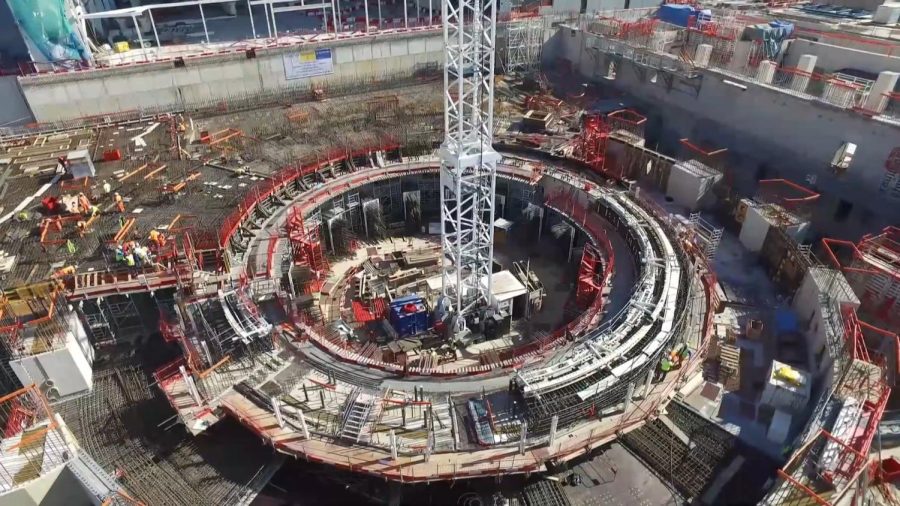Mega Magnets
Photo courtesy Quartz
ITER, nuclear fusion center
Nearly one hundred years ago, scientists first theorized about the reactions that generate the sun’s massive energy output. They would eventually conclude that in the sun’s core, where temperatures exceed tens of millions of degrees celsius, hydrogen atoms were colliding and creating new helium atoms, releasing vast amounts of energy in the process. The next question those scientists asked was: how can we recreate those fusion reactions on Earth and harness their immense power?
After nearly half a century on the drawing board, the concept of the fusion reactor is finally being brought to life in an international endeavor named ITER. The project is to build a functioning fusion reactor that replicates the conditions inside the sun and generates a net positive energy output by forcing the fusion of hydrogen atoms into helium atoms and collecting the energy released from that reaction. The supermassive reactor is being built in the south of France and is currently being assembled.
Earlier this year, the largest magnet ever built was shipped from the US to France. It will be at the core of the reactor and will be used to contain the 100 million degree celsius plasma that the reaction will take place in. The magnet will be 18 meters tall and 4.5 meters wide when it is fully assembled. It will weigh 1000 tons. The fact that this one piece of the ITER fusion reactor is already breaking records puts into perspective the monumental nature of this project.
Earlier in 2021, testing began on two of the hydrogen isotopes that will fuel the reactor: tritium and deuterium. The testing is taking place at the JET lab in England, a facility that has a considerably smaller version of the tokamak reactor that is at the heart of the ITER project. The results will be used to determine how the hydrogen atoms will interact in the reactor.
Currently, the ITER reactor is scheduled to be complete in 2035, and if its construction goes according to plan, this project could change the way the world works. The successful completion of this reactor will be a major step towards the commercialization of fusion power generation, an event that will drastically change the way humanity produces and consumes energy. Fusion reactors run almost 100% clean and produce far more energy proportional to the amount of fuel they use as compared to other methods of energy generation. Given this and the fact that the fuel they use is made from hydrogen that can be found in abundance in our oceans, fusion reactors may become a source of seemingly limitless energy in the future. If fusion technology reaches this point, the world’s quality of life could improve at its fastest rate in history.
Unfortunately, the pandemic has slowed the reactor’s progress slightly. Recently, the director of the project gave a statement saying that the project will no longer meet its original goal of first producing energy in 2025. He did say that he believes that the project will still meet its long-term 2035 goal of being fully operational. The project has also run slightly over budget, but the 35 nations that are bankrolling it have provided more funds to compensate.
Fusion reactor technologies represent the future of energy production, and we have the opportunity to watch as the world’s first viable fusion reactor is built. There can be no doubt that over the next decade and a half, the ITER reactor will continue to break records and blow minds as it nears completion.

Grade: 12
Years on Staff: 4
Why are you writing for The Flintridge Press? I hope to improve my writing skills, enhance my ability to collaborate...









